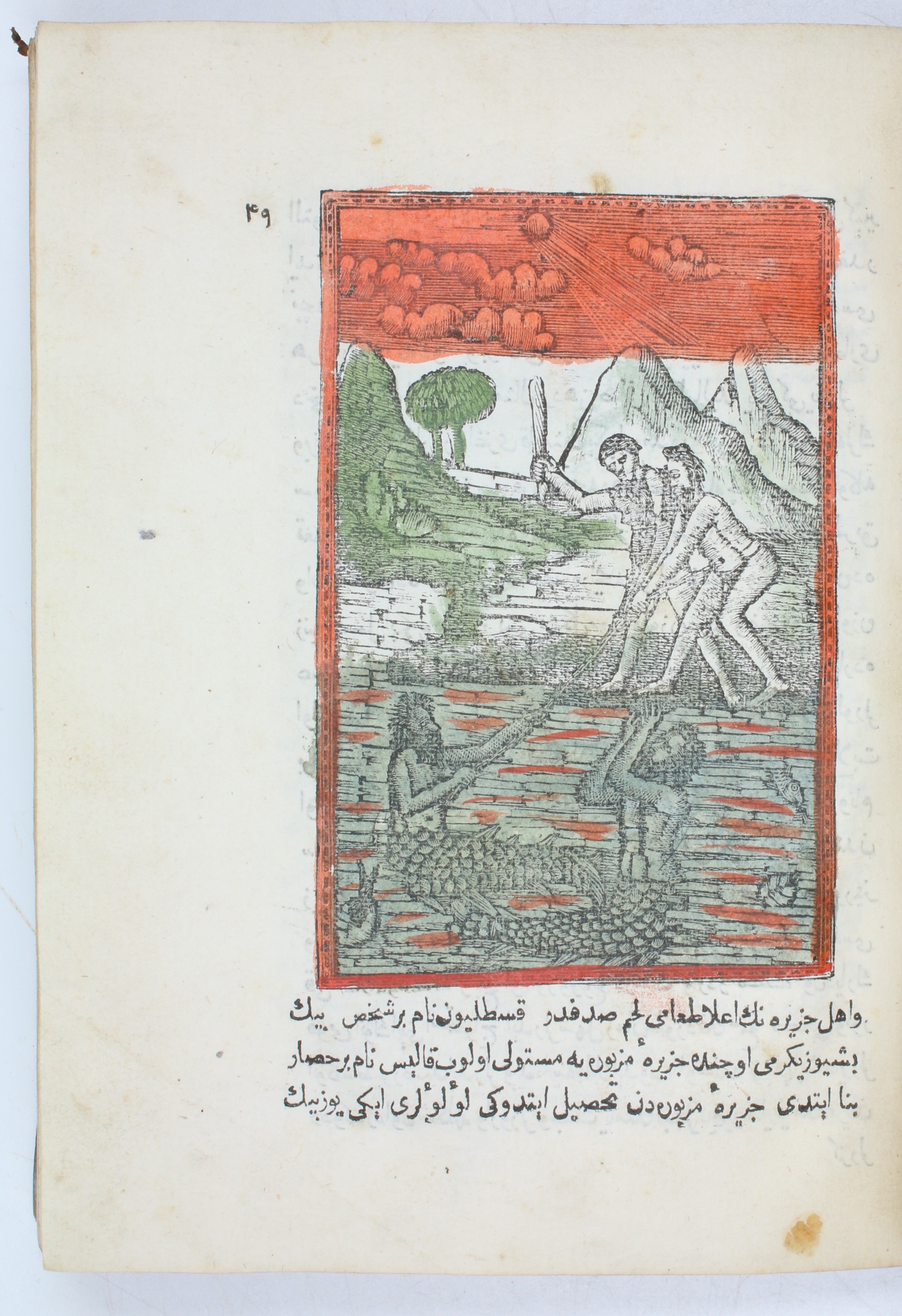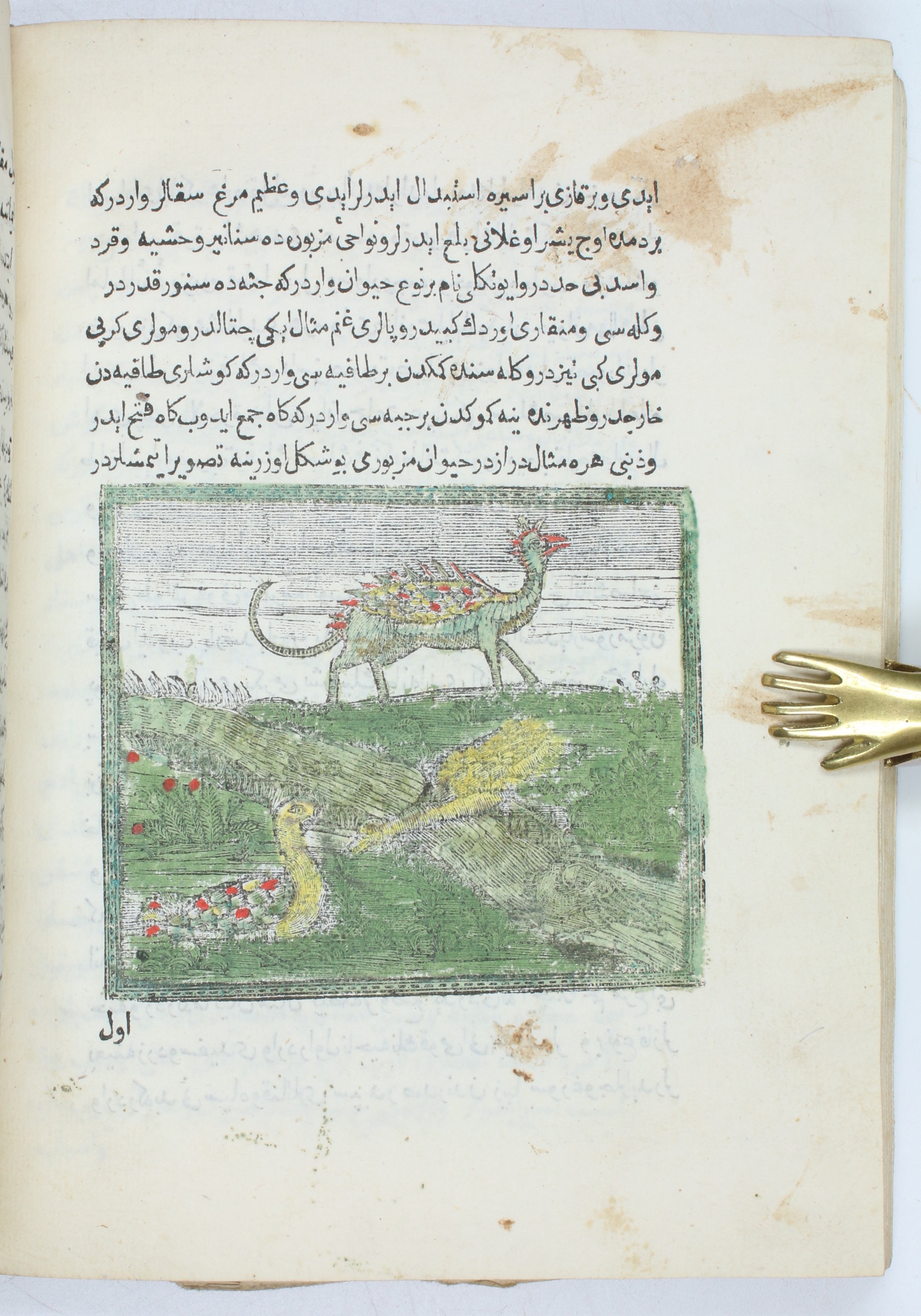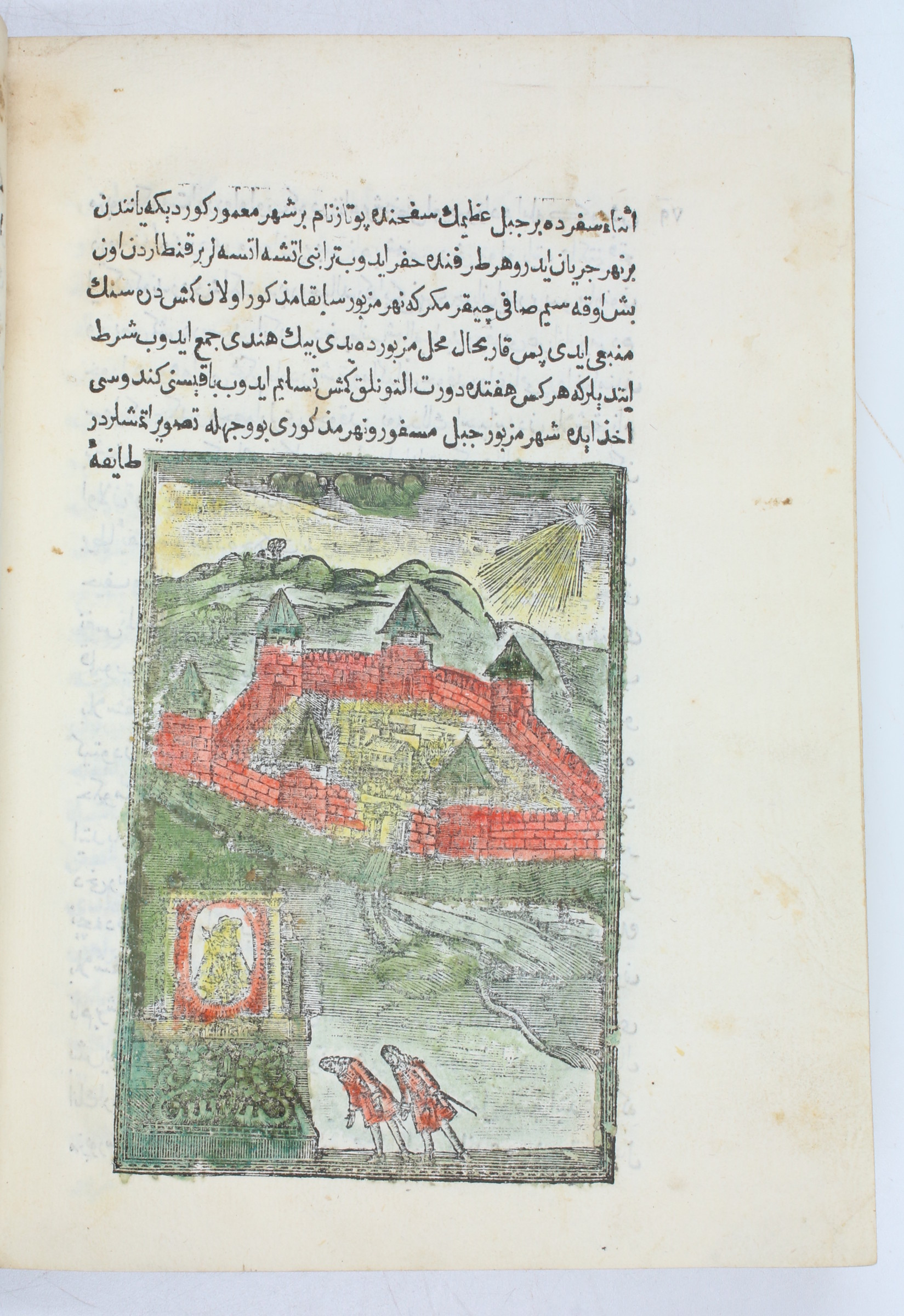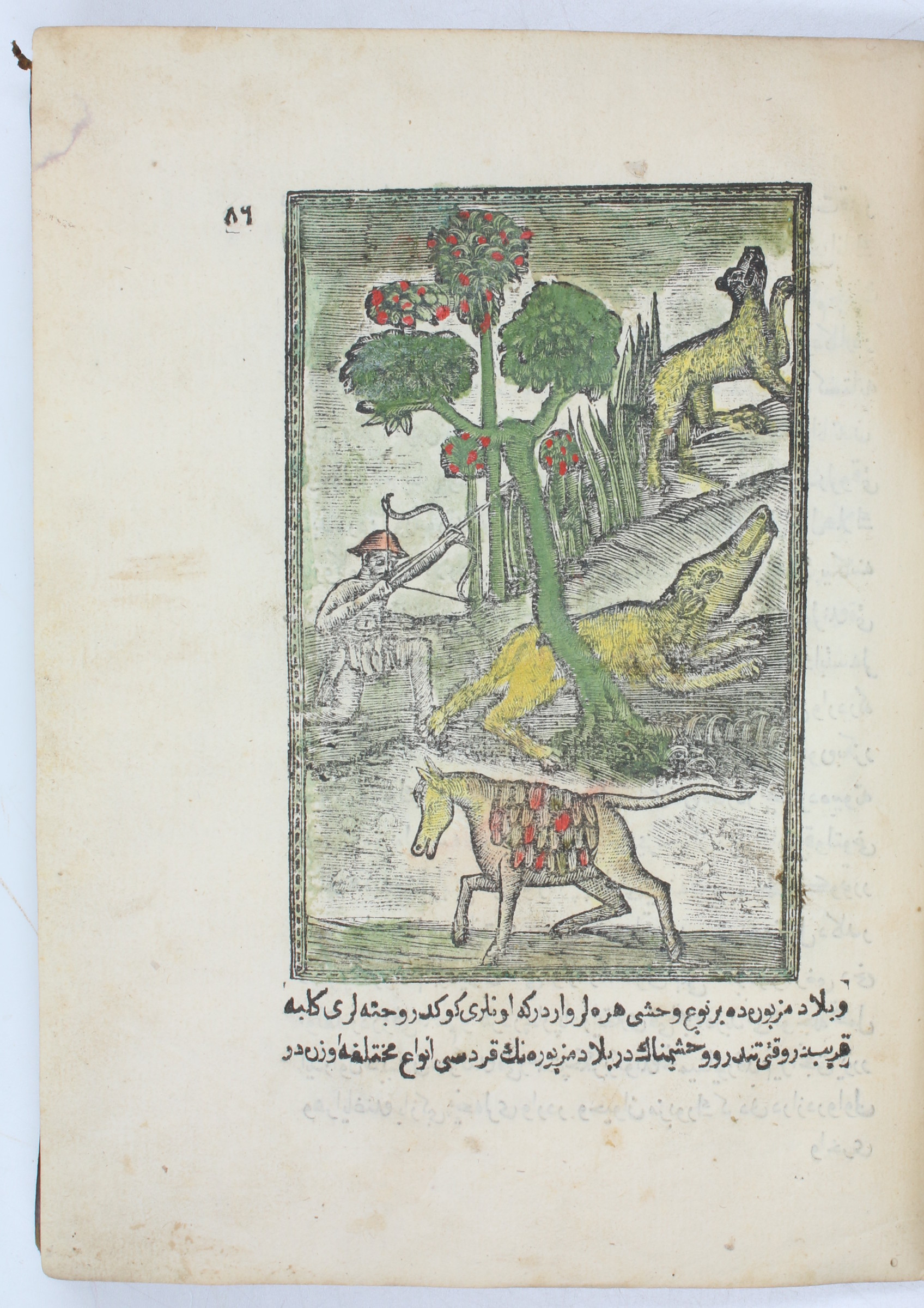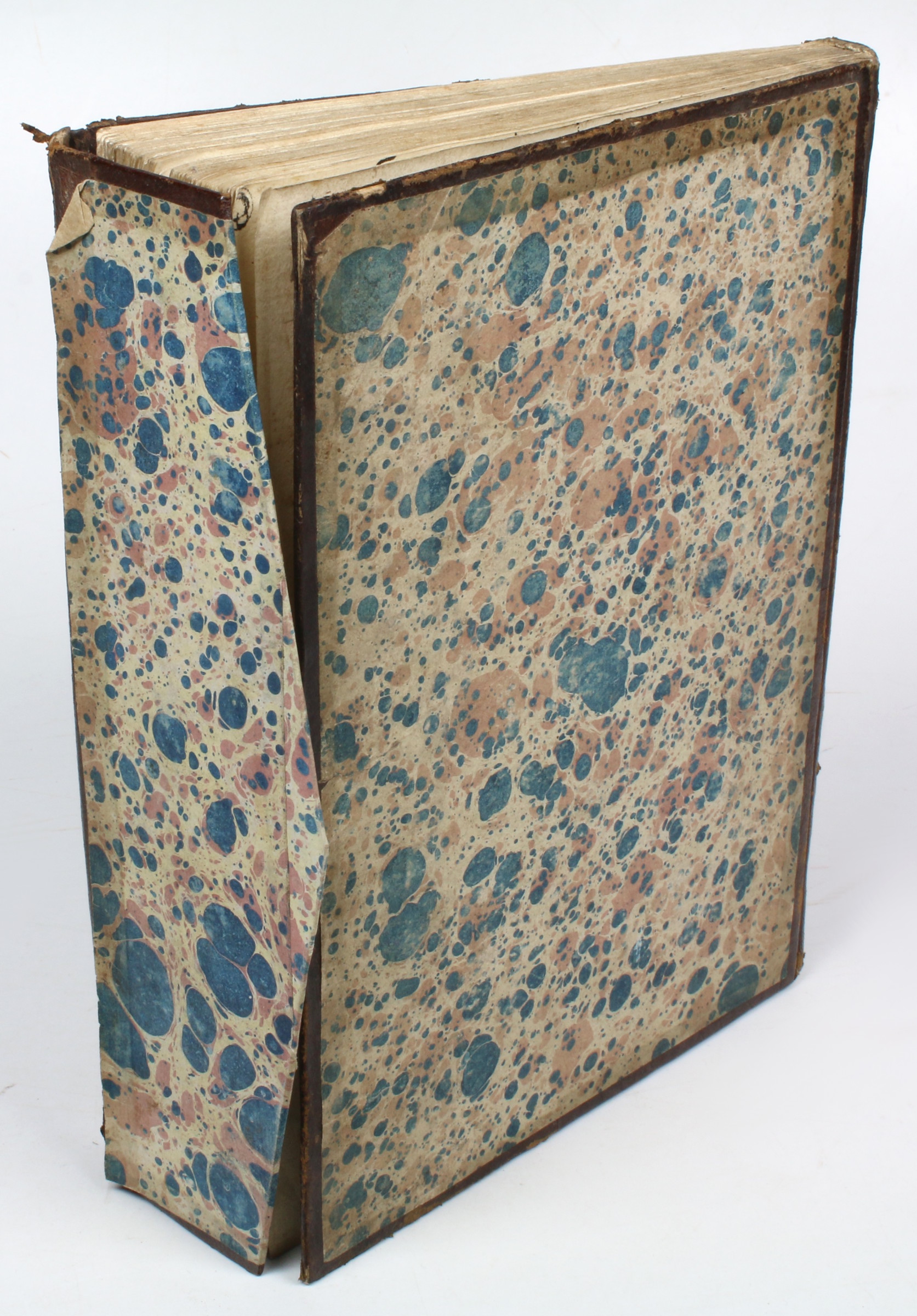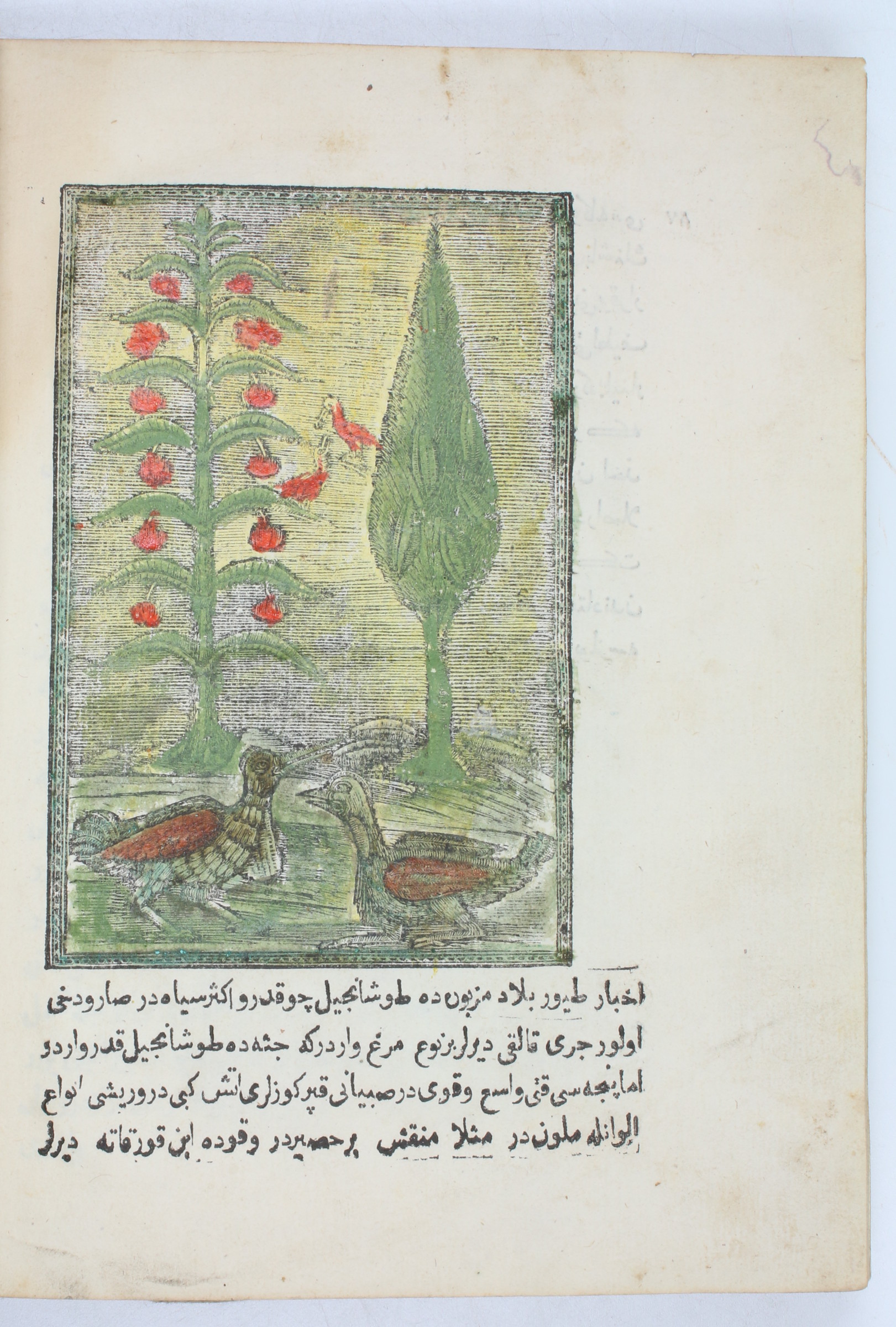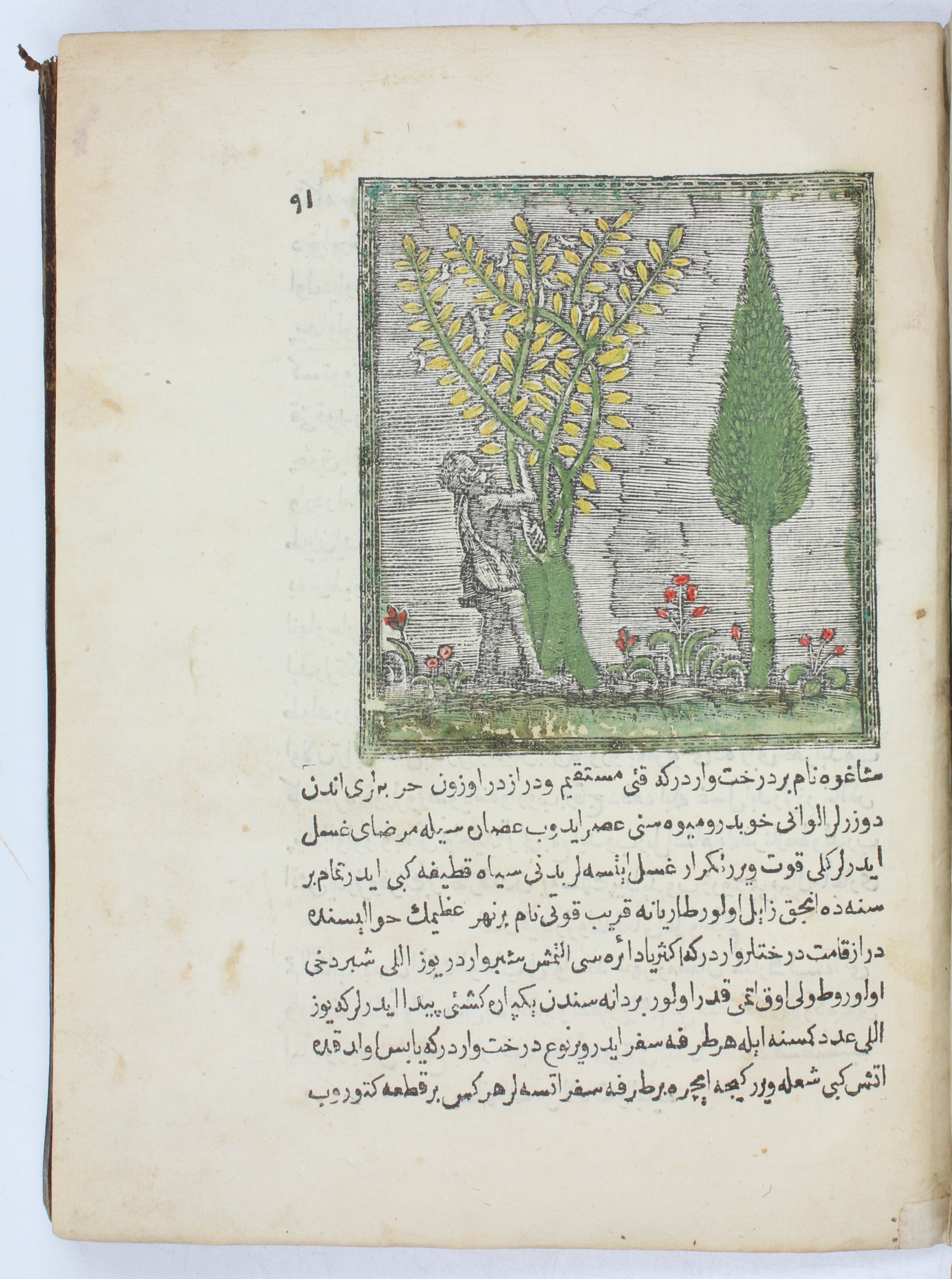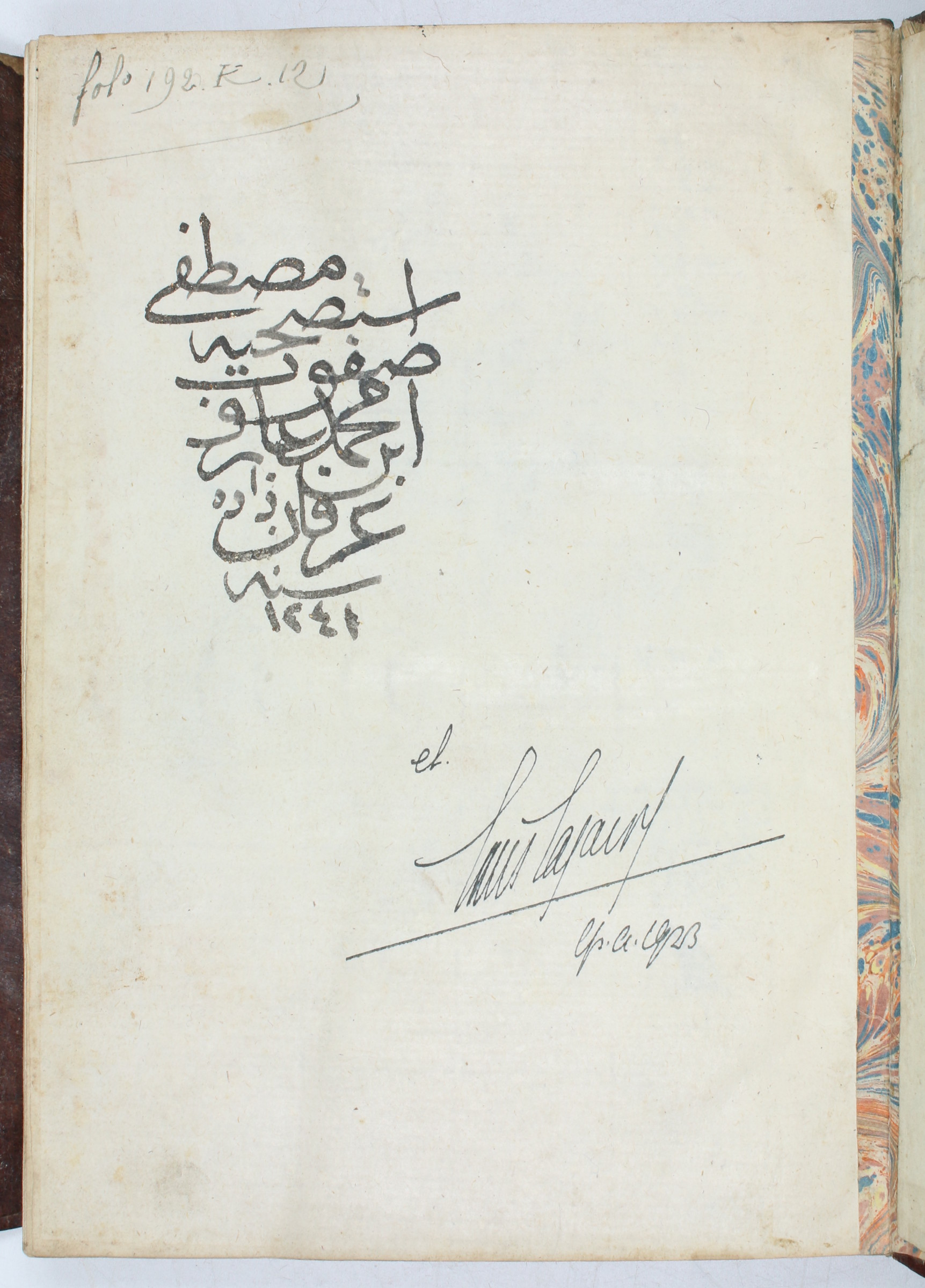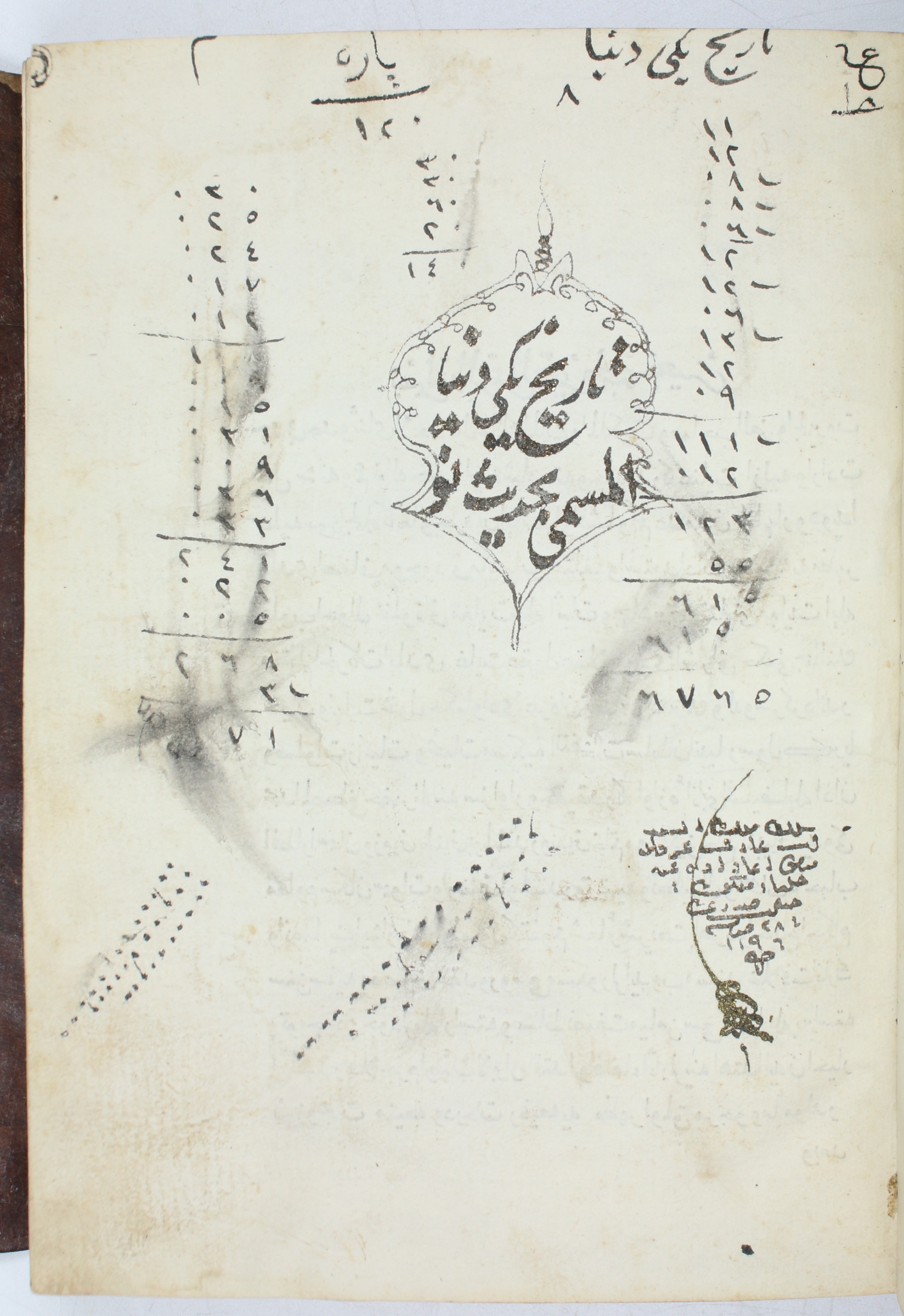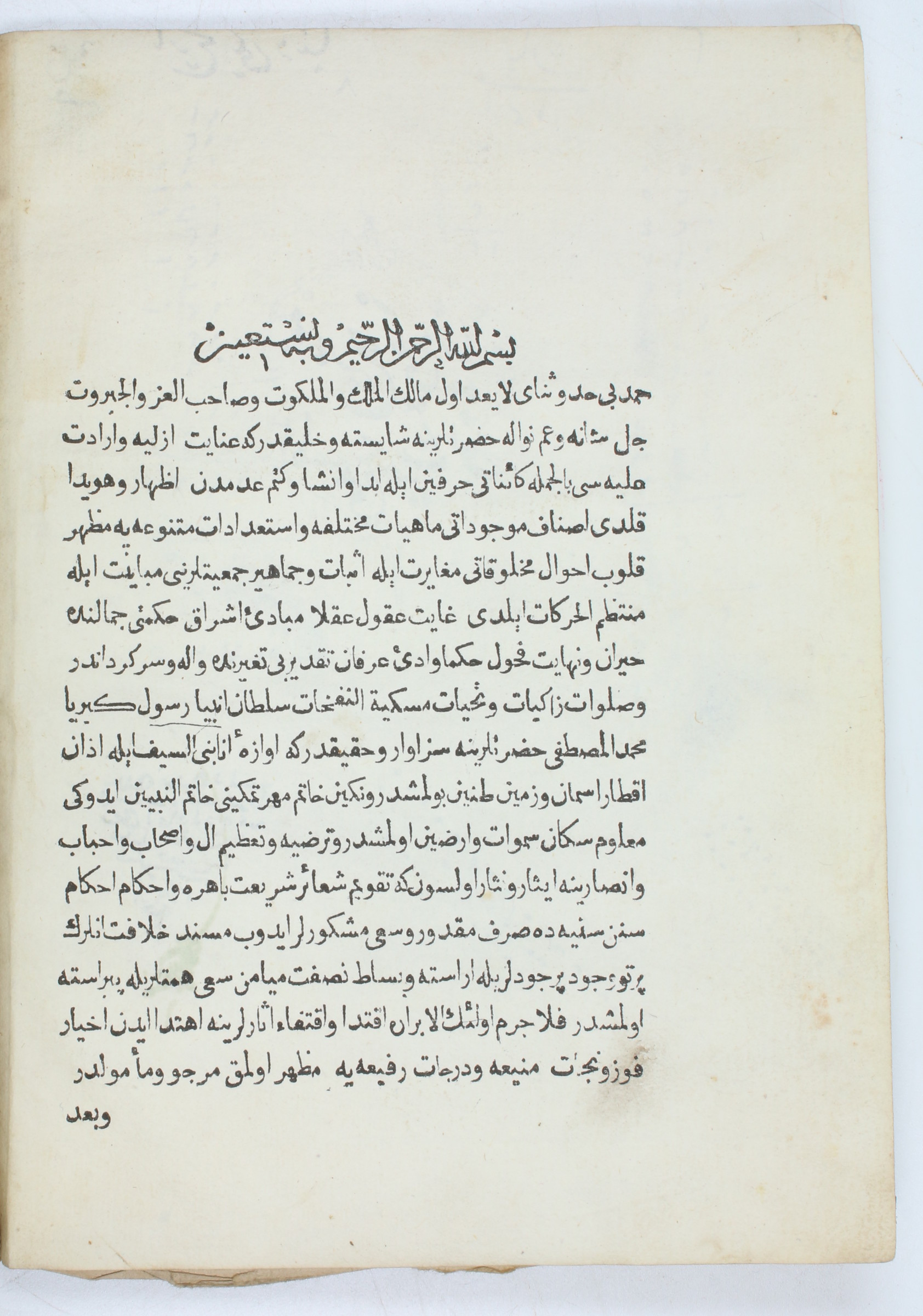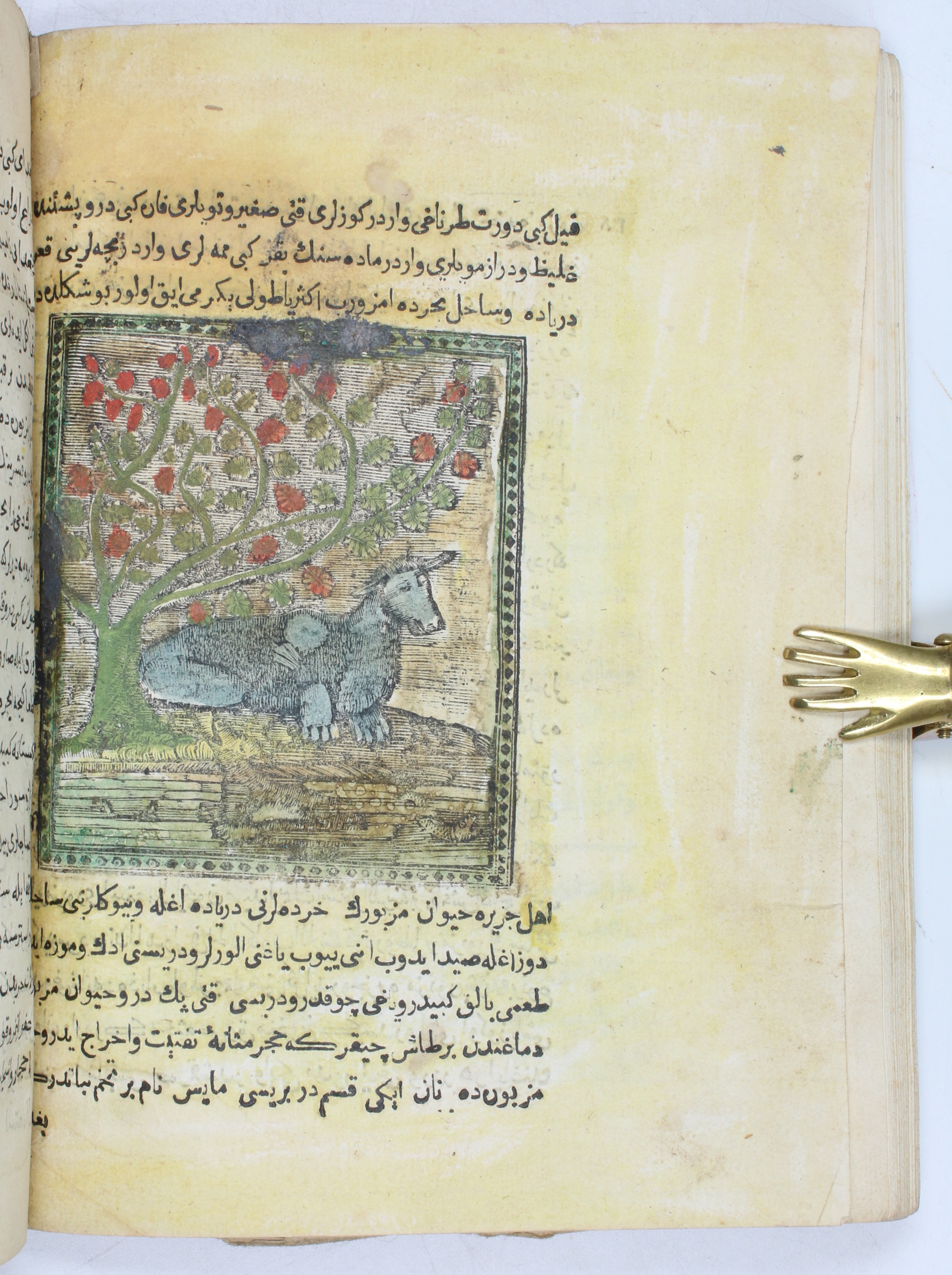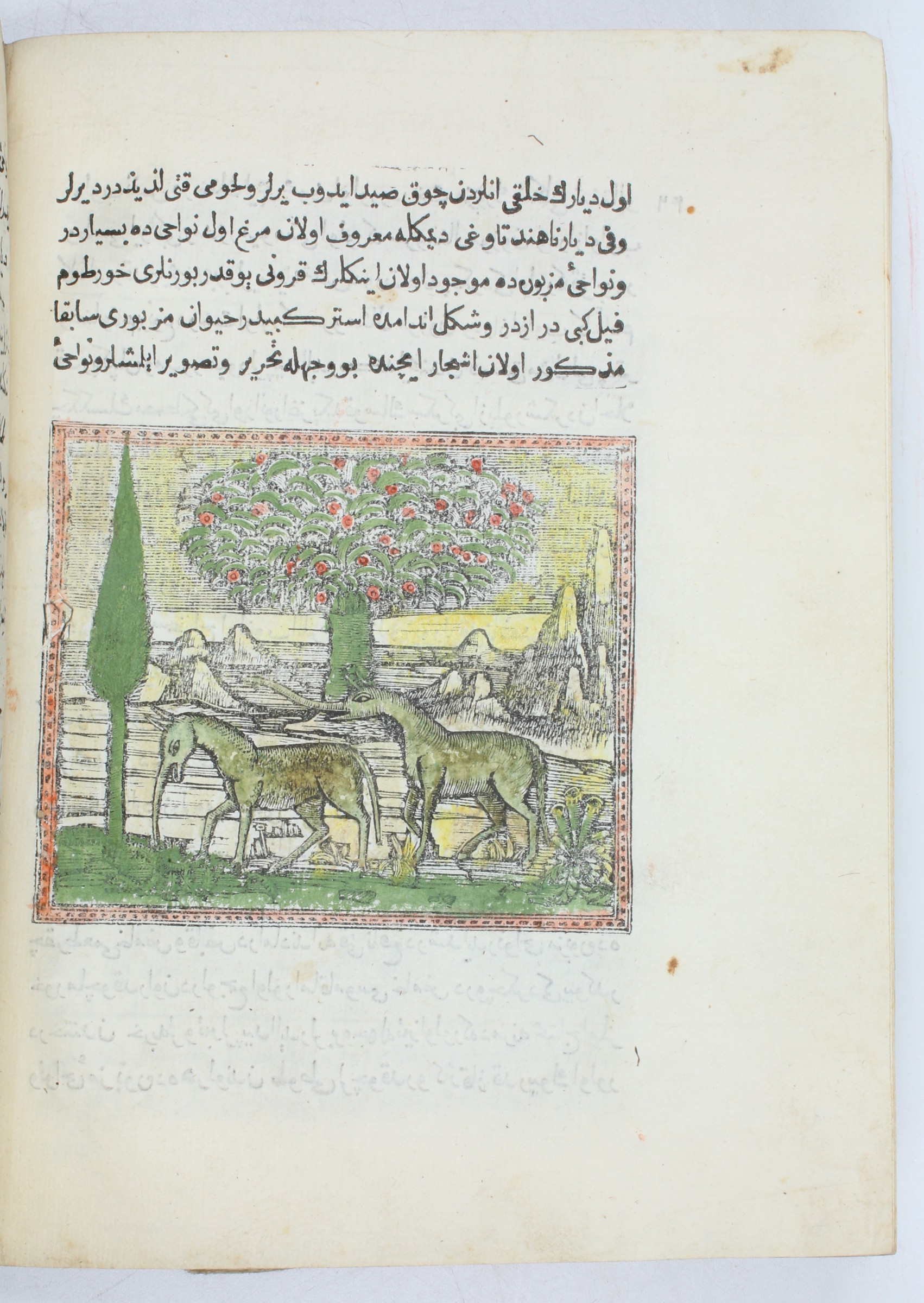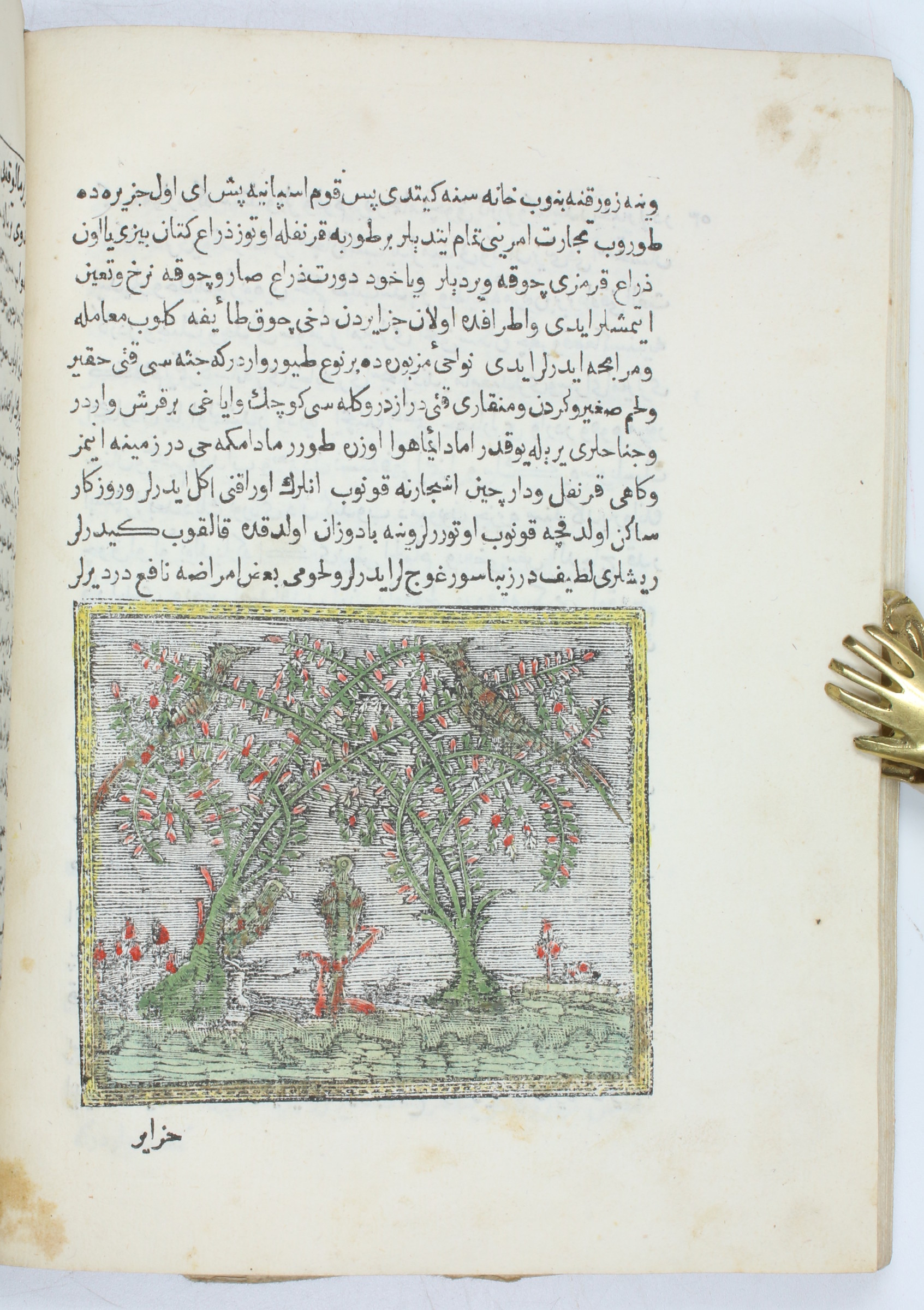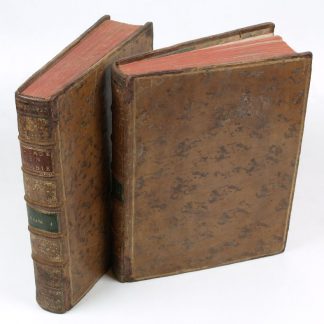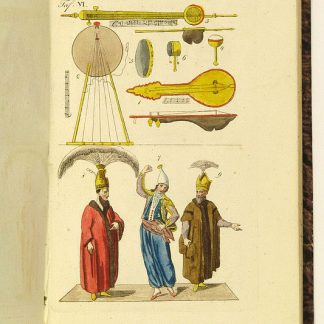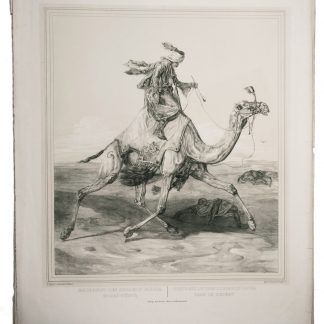The first book about America by a Muslim - coloured copy
Tarikh-i Hind-i gharbi al-müsemma bi-Hadis-i nev [A History of the Western Indies].
4to (161 x 212 mm). (3), 91 ff. With 13 woodcut hand-coloured illustrations in the text (lacking the 4 double-page engraved plates). Contemporary half calf binding with marbled covers and fore-edge flap.
Rare first edition of this illustrated history of the New World in Ottoman Turkish: the first book published in Turkey to contain illustrations, the earliest book about the New World published in the Ottoman Empire, and one of the first titles printed by a Muslim in Turkey. The contemporary colouring of the woodcuts, which depict curious oddities, fantastic creatures and the native people of the New World, lends this specimen a visual appearance very different from that of the rather plain copies in which this book is usually known (14 copies recorded by OCLC). The only similarly embellished copy of the Hind al-Gharbi we could trace is the one held by the Lilly Library.
"Although ascribed in Turkish bibliographies to one Mehmed Ibn Hasan üs-Su'udi, the authorship is uncertain [...] Despite the title, this is not a history of the West Indies. It opens with a general geographical and cosmological discussion, and follows with an account of the discovery of the New World, with considerable fantastic elaboration in the spirit of the more fabulous passages of Abu Hamid and Qazwini. Among the illustrations are depictions of trees whose fruits are in human form, long-snouted horses, mermen at battle with land-dwellers, and other men and beasts of nightmarish aspect" (Watson).
This work, which survives in a number of manuscripts (none as complete as this printed edition), was composed in Istanbul around 1580. After a synthesis of Islamic geographical and cosmographical writings (notably drawing from al-Mas'udi, who is the most frequently cited source, and Ibn al-Wardi, mentioned almost 20 times), the book relates the discovery of the New World. It is this Chapter 3, which comprises the final two thirds of the text, in which the unidentified author describes the explorations and discoveries by Columbus, Balboa, Magellan, Cortés and Pizarro. As Goodrich's study of the book's sources shows, this section is derived directly from Italian editions of 16th century texts, particularly works by López de Gómara, Peter Martyr, Agustín de Zárate, and Oviedo, which the author excerpted, rearranged, and translated into Turkish. Complete copies are rare: the book was printed in an edition of only 500 copies, many of which were subsequently defaced or destroyed for contravening the Islamic dictum against representing living things.
The "Tarikh-i Hind-i gharbi" is only the fourth book printed in the Arabic alphabet in the Ottoman Empire, produced by Ibraham Müteferrika, an Hungarian convert to Islam who believed he could help arrest the decline of the Empire through his printing press. He established his shop in 1729 in the palace of the Grand Vizier Ibrahim Pasha and was granted a license to print all but religious works (which remained the province of scribes).
A few corners or edges clipped or trimmed, remargined by an early collector. Lacks the engraved maps and astronomical chart present in some copies. Old inscription in Arabic (dated 1341 H) and ownership of the French diplomat Louis Lagarde (dated 1923 CE) to front flyleaf.
Provenance: 20th century Parisian private collection, kept in the family for several generations and dispersed in 2022.
John Carter Brown 463. Toderini III, p. 41, no. IV. Karatay 250. Sabin 94396. William J. Watson, "Ibrahim Müteferrika and Turkish Incunabula", in: Journal of the American Oriental Society 88, no. 3 (1968), pp. 435-441, no. 4. Özege 19828. OCLC 416474553. Cf. T. D. Goodrich, The Ottoman Turks and the New World (Wiesbaden 1990).

